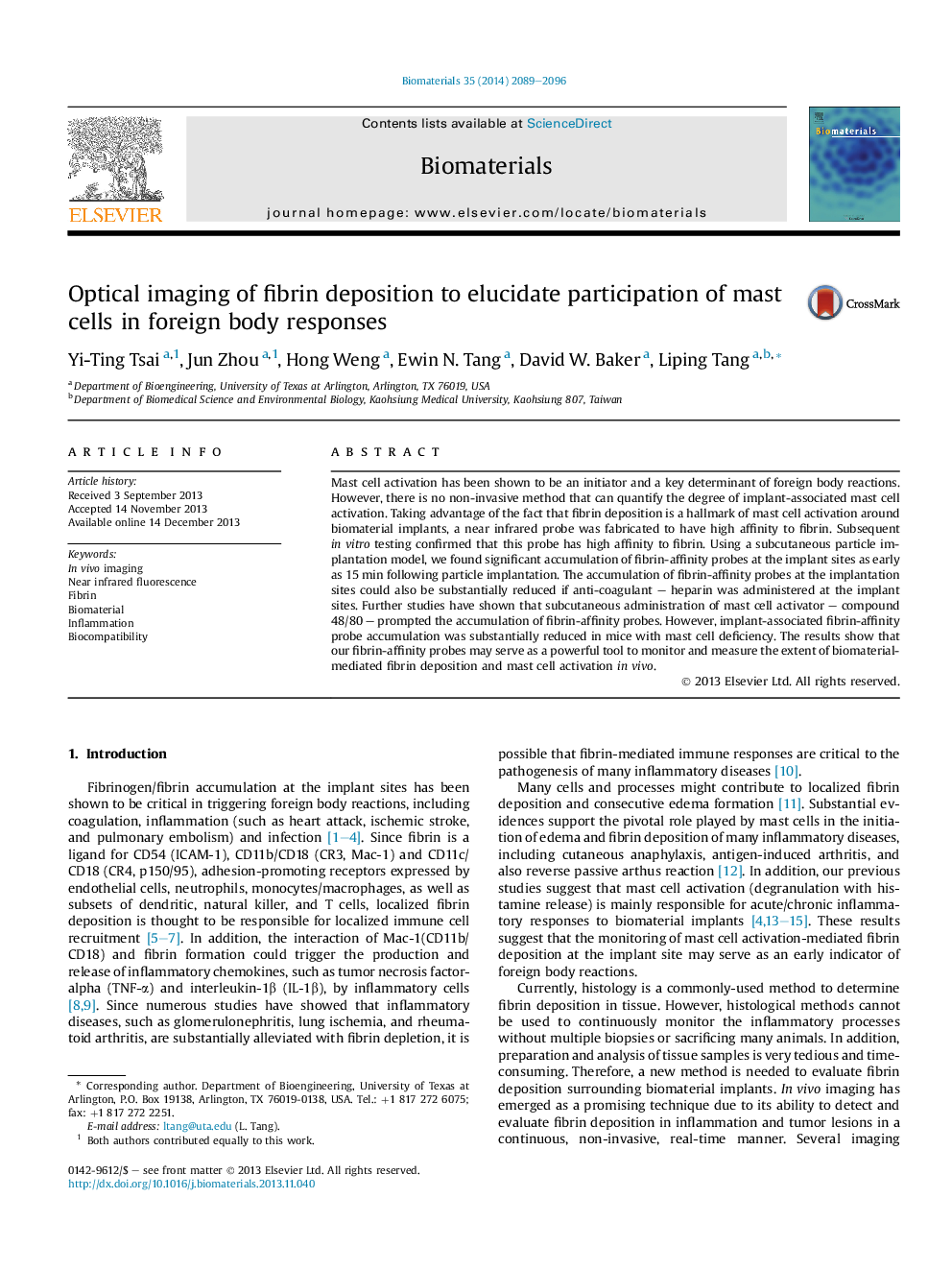| Article ID | Journal | Published Year | Pages | File Type |
|---|---|---|---|---|
| 10228351 | Biomaterials | 2014 | 8 Pages |
Abstract
Mast cell activation has been shown to be an initiator and a key determinant of foreign body reactions. However, there is no non-invasive method that can quantify the degree of implant-associated mast cell activation. Taking advantage of the fact that fibrin deposition is a hallmark of mast cell activation around biomaterial implants, a near infrared probe was fabricated to have high affinity to fibrin. Subsequent in vitro testing confirmed that this probe has high affinity to fibrin. Using a subcutaneous particle implantation model, we found significant accumulation of fibrin-affinity probes at the implant sites as early as 15 min following particle implantation. The accumulation of fibrin-affinity probes at the implantation sites could also be substantially reduced if anti-coagulant - heparin was administered at the implant sites. Further studies have shown that subcutaneous administration of mast cell activator - compound 48/80 - prompted the accumulation of fibrin-affinity probes. However, implant-associated fibrin-affinity probe accumulation was substantially reduced in mice with mast cell deficiency. The results show that our fibrin-affinity probes may serve as a powerful tool to monitor and measure the extent of biomaterial-mediated fibrin deposition and mast cell activation in vivo.
Related Topics
Physical Sciences and Engineering
Chemical Engineering
Bioengineering
Authors
Yi-Ting Tsai, Jun Zhou, Hong Weng, Ewin N. Tang, David W. Baker, Liping Tang,
